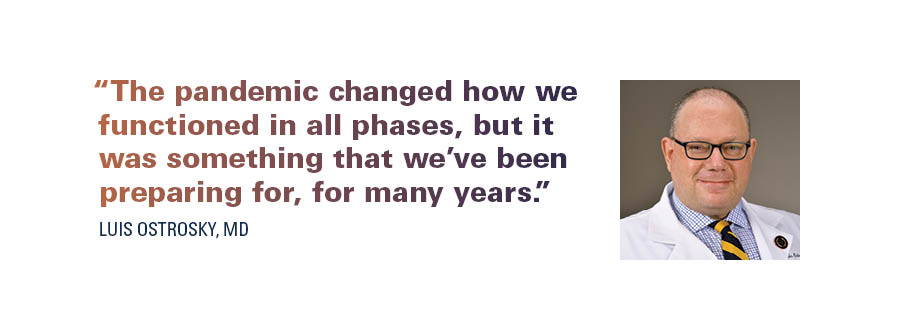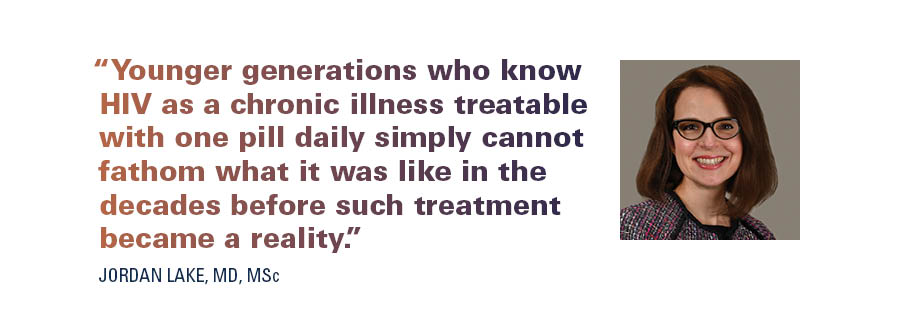On March 11, 2020, after more than 118,000 cases and 4,291 deaths throughout more than 100 countries, the World Health Organization declared COVID-19 a pandemic. The disease, which was first discovered in China’s Hubei Province in mid-December 2019, would spark pain, suffering, and change throughout the entire world.
Nearly all aspects of life were disrupted by the rapid spread of COVID-19. Children had to change the way they played and learned. Adults had to change the way they worked and socialized. Governments had to change how they governed, and scientists had to change how they continued to make amazing scientific breakthroughs.
As with most tragedies, after the initial shock and devastation subsided, humans evolved and learned how to live their everyday lives just the same as before, although perhaps slightly different, and not always for the worse.
More than three years later, on May 5, 2023, the World Health Organization officially declared an end to the global Public Health Emergency for COVID-19. However, while the world has begun to move on from the pandemic, the virus has certainly not disappeared.
According to the WHO, the virus, which has affected nearly 800 million people and caused over 7 million deaths worldwide, is still spreading, leading to over 300,000 reported cases in September 2024, almost five years since the pandemic began.
While these numbers remind the world that we are not yet truly safe from this disease of the past, it’s a warning to infectious disease experts of the need to be prepared for the future.

“The COVID-19 pandemic was a once-in-a-generation event that affected all aspects of life dramatically,” said Luis Ostrosky, MD, professor and Memorial Hermann Chair in the Department of Internal Medicine. “The pandemic changed how we functioned in all phases, but it was something that we’ve been preparing for, for many years.”
As director of the Division of Infectious Diseases at McGovern Medical School, Ostrosky leads the charge in pandemic preparedness and has helped the division grow exponentially from nine to 15 faculty members in the past three years. He has overseen the establishment of five infectious disease services at Memorial Hermann Hospital and LBJ Hospital and has led numerous research studies on COVID-19 and other infectious diseases. The Division of Infectious Diseases also runs one of the largest infectious diseases training fellowships in the country.
During the pandemic, Ostrosky, with the strength of all six UTHealth Houston schools, helped to establish the UTHealth Houston COVID-19 Center of Excellence. The initiative brought together thousands of academic scientists and physician-researchers to lead the way in adult and pediatric care, and to stand at the forefront of COVID-19 research.
As the pandemic has shifted, so has the focus for COVID-19 research, including some of the division’s most recent trials funded through the NIH that began enrolling patients with long COVID for the Researching COVID to Enhance Recovery Initiative (RECOVER) in late 2023.
“When we established the COVID Center of Excellence, it was one of the only centers in Texas,” Ostrosky said. “This has allowed us to collaborate with other organizations and departments and is helping us to take the lead on studying long COVID.”
While COVID-19 dominated the headlines for years, countless other infectious diseases continue to plague the population, like the fungal meningitis outbreak in 2023, which was linked to cosmetic surgeries in Mexico and caused by the fungus Fusarium solani.
Between Jan. 1 and May 13, 2023, 13 patients who had undergone procedures involving epidural anesthesia at a pair of medical clinics in Mexico were diagnosed with fungal meningitis. Nine of the patients died from brain vessel injury caused by the fungus, while two more remained on an experimental therapy called Fosmanogepix monotherapy.
“Global warming and climate change have seen a rise in these types of infections,” Ostrosky said. “For the fungal meningitis outbreak, we were the main site in the United States and the first to diagnose the disease. We realized it wasn’t susceptible to existing antifungal treatments and took the lead nationally to lead the fight against it with experimental therapies.”
In an effort to help spread awareness of current and potential infectious diseases both locally and around the world, the division created the Emerging Infectious Diseases Update, a monthly newsletter that compiles all of the latest developments in emerging and current infectious diseases that impact both the local community and the world at large. Each month, the newsletter curates the most relevant updates from trusted sources such as the CDC, WHO, FDA, and the United Nations as well as local and national media outlets such as ABC, CBS, CNN, and FOX to provide comprehensive and timely coverage.
“Our goal is to provide our readers with critical information – ranging from trending outbreaks and COVID-19 statistics to clinical guidance, research findings, and public health recommendations – within one accessible platform,” said Marienellys Delgado, MPH, infection control practitioner in the Infection Prevention Program at UT Physicians. “In today’s fast-paced world, it is easy to miss crucial updates amidst the constant flow of information. That is why we felt it was important to create this newsletter – to offer community members a trusted, centralized source for staying informed on infectious disease updates.”
In addition to emerging infectious diseases, the division is also trying to tackle a condition that has plagued the world since the early 1980s: Human Immunodeficiency Virus, or HIV, which was first reported in the United States in June 1981. In the 42 years since its discovery, an estimated 42.3 million people have died from complications related to HIV, while an estimated 39.9 million people are still living with HIV, a disease that currently has no cure, according to the WHO.

“It is almost impossible to meaningfully express the personal, national, and worldwide devastation that HIV has caused in the past 40+ years,” said Jordan Lake, MD, MSc, Barbara E. Murray, MD, Distinguished Professor in Internal Medicine Research and director of the HIV Medicine Fellowship. “Younger generations who know HIV as a chronic illness treatable with one pill daily simply cannot fathom what it was like in the decades before such treatment became a reality. For those of us providing care or with loved ones living with HIV, it was impossible in those early years not to be deeply personally affected.
“Importantly, however, HIV continues to devastate, including through persistently high rates of new HIV diagnoses every year in Houston. We can now keep people alive and well with antiretroviral therapy; to prevent further devastation, the charge now must focus on HIV prevention in our communities.”
The Division of Infectious Diseases currently has numerous research studies dedicated to the study of HIV, ranging from learning more about comorbidities and complications of HIV to finding effective treatments and a cure for HIV.
“Finding a cure for HIV has been an extremely difficult process that many researchers are still devoted to,” Lake said. “Finding such a cure (in a form that can be easily and affordably adapted worldwide) would allow millions of people to be free of a stigmatizing and potentially deadly condition. However, we have the power right now to prevent people from acquiring HIV, and with Texas having one of the highest rates of new HIV diagnoses in the United States annually, that is where we can make an immediate difference.”
While the recent focus has shifted from COVID-19 to fighting and preventing other emerging infectious diseases, the drive and passion for eradicating these diseases remains steady in the Division of Infectious Diseases. While continuing to learn from the past, infectious disease experts at McGovern Medical School hope to ensure a future free of pandemics like COVID-19.
Ostrosky summed up the mission of the Division of Infectious Diseases, “We will definitely be ready for the next one.”
